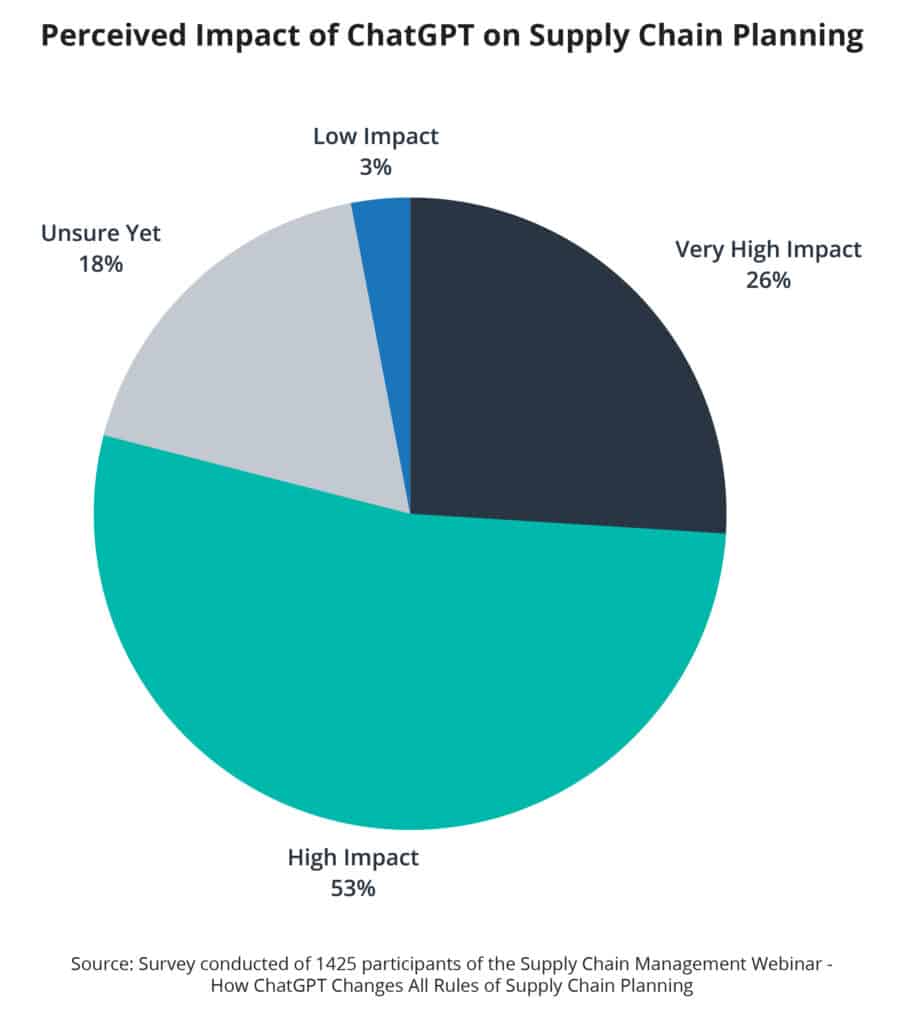
In a recent webinar, How ChatGPT Changes All Rules of Supply Chain Planning, we were joined by JDE’s IBP Director, Tineke Kok, and Martijn Lofvers from Supply Chain Media. We surveyed 1425 registered attendees to understand their perceptions of the impact of ChatGPT on Supply Chain Planning.

According to the survey, 79% of the respondents perceived a high or very high impact of ChatGPT on Supply Chain Planning. This highlights the growing interest and importance of Artificial Intelligence and Large Language Models in Supply Chain Planning.
With the integration of ChatGPT into the traditional planning processes, organizations can move from reactive to proactive planning, and from manual to automated processes.
The benefits of this transition include improved accuracy of forecasts, leading to optimized inventory levels to reduce excess stock or stockouts, but also an increased understanding of the demand for anyone in the organization.
The combination of insight-based planning with ChatGPT will be very powerful. Read more about insight-based planning here or watch the recording of our webinar on ChatGPT for Supply Chain Planning.
Explore more on our website about how Logility incorporates AI into the fast moving and everchanging supply chain or get in touch with our team to discuss.
“This traditional planning approach has been an excellent approach but has major limitations. The primary limitation is that the process does not account for the drivers of demand. In other words, traditional planning is backward-looking, whereas insight-based planning is forward-looking.
Read more: From Traditional Planning to Insight-Based Planning: A New ApproachInsight-based planning is an entirely different way of working. With this approach, organizations come to planning meetings with the drivers of demand and can discuss how to influence demand. Instead of focusing on historical data only, insight-based planning takes into account market trends, customer preferences, and other factors that can impact demand. By taking a forward-looking approach, organizations can create more accurate plans that reflect the market realities.”


